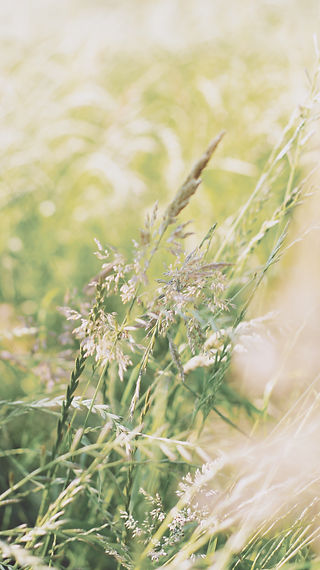
Rest
Let a quietude come upon you.
Take a breath and come into the present moment.
Put aside your cares, worries, frustrations and distractions.
Allow your current state to be as it is.
Have one long unhurried moment.
Forgive your failings. They're part of being human.
Be present to the Presence.
Let Silence nourish you.
Hidden Contemplatives
About Qigong

Qigong (pronounced Chee Gung) means cultivation of life force energy. It was originally known as Daoyin, meaning leading and guiding the Qi. Qigong is thought to date back approximately 2,500 years ago, though some pottery artefacts depicting standing qigong postures date back over 5000 years.
Qigong is one of the five original branches of Traditional Chinese Medicine. It encompasses many practices including the aligning of our awareness with slow meditative movements, standing meditation, breathing practices, postural alignment, and the cultivation of harmonious internal energy flow. It is linked with the meridian system and the movements and forms are designed to strengthen our energy flow, and stimulate the organ and meridian system of the body towards balance. It is practiced around the world today as a health preservation system. Health is seen as the smooth and vibrant flow of Qi in the body.
The various Health Qigong forms we learn in class have been handed down through the centuries for their medicinal and health benefits. These slow moving sets activate the tissues, sinews, joints and systems of the body in beneficial ways. There are thousands of Qigong forms and styles, and vary from medical qigong to seated meditation.
Qigong has always been considered a practice of self-cultivation, or yang sheng. When I first came to the practices of Qigong and Tai Chi in 1995, the slow meditative movements connected me to an internal sense of Coming Home, and this is what has led my practice and teaching ever since. The circular and spiral movements help to ground us, relieve stagnation, regulate the nervous system, improve circulation, mental clarity, emotional strength and balance, and bring us in touch with a sense of beauty, flow, and self-awareness.
More and more scientific studies are correlating regular Qigong practice with health benefits such as reduced stress, strengthening of bone mass, reduced inflammation, improved cardiovascular and respiratory health, nervous system regulation and improved flexibility and joint health. The gentle nature of the practice makes it accessible to everyone, and can be modified into a seated practice where necessary.
Daoist and contemplative spiritual traditions and philosophy have been integrated into the practice of Qigong since earliest times. Qigong embodies many principles of the Dao, including simplicity, humility, compassion, patience, balance, the cultivation of stillness, softness overcoming hardness, the ever-changing movement of life, and the inspiration from nature and the five elements.
The movements help mental focus and coordination and ground us in the present moment, bringing a centered feeling to the body and mind. This allows the supreme sovereign of the Heart to shine and the Spirit to rise.
About Tai Chi

Tai Chi (or Taiji in Pin Yin) is an ancient Chinese system of healing using gentle, relaxing body movements. Tai Chi grew out of a long heritage of Qigong practice, Shaolin Kung Fu, and Daoist philosophy. In the 13th century, Chang Sanfeng (Daoist priest) is said to have been inspired by observing the strength and power of a snake and bird in fight mode. The power and flexibility of the animals to move and yield inspired him to develop a slower, more flowing style of physical fight training for the monks in his monastery. This would allow the development of internal energy and strength, and yet remain consistent with and support the spiritual life and training of the monks. This change towards slower, more flowing movements later developed into Tai Chi. Observation of the natural movements of animals and birds have inspired both Qigong and Tai Chi over the millennia, and many Forms were created by mimicking these movements.
Tai Chi (or taiji) itself translates as “Supreme Ultimate”. As such it describes a way of life and a system of healing and exercise, combining physical training, meditation/mental training and energy work. Along with Bagua and Xingyi, Tai Chi is an internal martial art, practiced primarily today for its health benefits.
The training promotes personal growth, balance and strength on all levels. The slow flowing movements connect us to our own natural rhythm and the rhythm of Nature. It has been called moving Meditation and shadow boxing due to the hidden strength and martial applications which form an integrated part of the circular flowing movements.
The main styles of Tai Chi today are Chen, Yang, Sun and Wu style. One of the most popular styles of Tai Chi taught today in the Western world is called Yang-style, after Yang Lu-Chan (1799-1872). It is characterised by soft flowing movements and embodies the Daoist principles of internal energy cultivation, strength through yielding and harmony.
Cheng Man-Ch’ing (1900-1975) is largely credited with introducing Yang style Tai Chi to the modern world, and for helping to open up this Art to the western world. Cheng developed the Yang style Short Form which is a concise and shortened form, containing the most valuable principles and movements of benefit to health and wellbeing. Students progress from Mini Forms to the Short Form on to the original Long Form.
This journey is a slow one, focused on patient, consistent effort, refinement, depth, compassion, and ultimately, humility and simplicity. It is a wonderful way to experience a deeply embodied, present, life.
Tai Chi and Qigong movements encourage and promote an internal sense of strength, wellbeing, balance and harmony. The gentle, slow, flowing movements are beneficial to people of all ages, improving circulation, building joint flexibility and strength, and improving overall health.